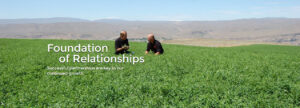Few race horses who gobble up Timothy Hay give it much thought, but the State of Washington, especially Kittitas County and the Columbia River Basin, is known the world over for producing the highest quality Timothy Hay to be found. That is a happy factor of climate, temperature, sunshine and wind at the right time.
But what exactly is “timothy” and what differentiates it from your average run-of-the-mill variety of hay?

Scientifically, timothy is a perennial grass native to much of Europe except for the Mediterranean region. According to Douglas Harper in the Online Etymology Dictionary, the name “timothy” is an American creation, since Phleum pratense was known in England as “meadow cattail grass.”
An American colonial farmer living in New Hampshire, Timothy Hanson, is credited with being the first to cultivate the grass in 1720 in North America as an agricultural plant raised for sale to others (Read http://en.wikipedia.org/wiki/Timothy-grass to learn more). What probably started as “Timothy’s” hay was eventually called timothy grass by 1736 and just plain “timothy” by 1747.
Timothy is a race horse delicacy and the best race horses are rewarded with the best timothy. And the best timothy comes from Eastern Washington.
Anderson Hay & Grain Co., Inc. (www.anderson-hay.com) has made an international reputation for delivering the finest timothy hay found in the world.


